
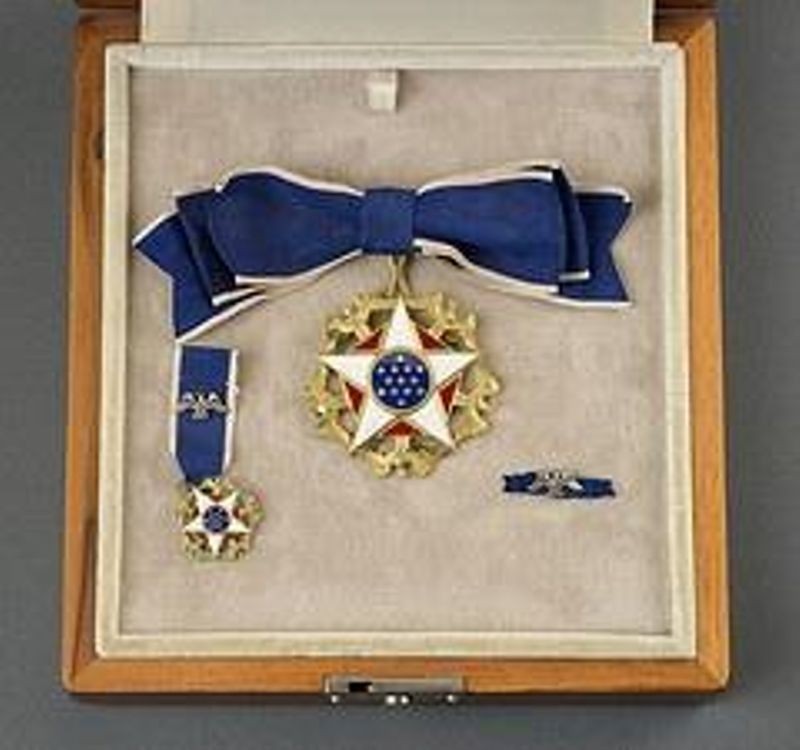
Helen Keller’s Presidential Medal of Freedom, awarded by Lyndon B. Johnson in 1964.
Established in 1963, the Presidential Medal of Freedom is one of the highest honors that can be bestowed by the President of the United States. Created by President John F. Kennedy, it recognizes “An especially meritorious contribution to the security or national interests of the United States, world peace, cultural or other significant public or private endeavors.” Winners have ranged from political and business leaders to actors and athletes. The wide-ranging scope of the award allows for recognition of individuals in multiple fields, typically to Americans, but also to those whose work outside the United States is considered vital to promoting the ideals of America.
While the range of winners of the Medal is so great, few involved with computing have ever received the award. Intel co-founder Gordon Moore, Vinton Cerf and Bob Kahn, co-developers of TCP/IP, were the only figures specifically noted for their contribution to computing, though business figures such as An Wang, Bill Hewlett and David Packard, and Thomas Watson, Jr., were recognized for their work leading computing and technology companies. For 2016, the list included five awards that directly tie to the field of computers, and two that are closely connected to the Computer History Museum.
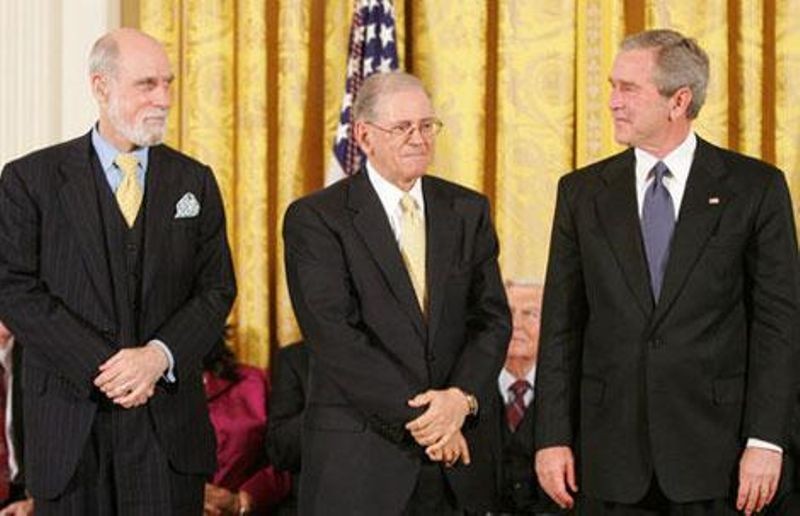
Vint Cerf (Left), and Bob Kahn (Center) were honored with the Presidential Medal of Freedom by President Bush in 2005.
The 2016 list of honorees includes sports figures such as Kareem Abdul-Jabbar and Michael Jordan, broadcaster Vin Scully, actors including Robert De Niro, Ellen DeGeneres, Tom Hanks, Robert Redford, and Cicely Tyson, artist Maya Lin, educator Eduardo Padron, television producer Lorne Michaels, attorney Newton Minnow, musicians Bruce Springsteen, and Diana Ross, and activist Elouise Corbell. While all of those listed had an effect on the world during a period that computers were advancing, the five who directly speak to the importance of computing are Richard Garmin, Frank Gehry, Margaret Hamilton, Bill & Melinda Gates, and the late Adm. Grace Murray Hopper.
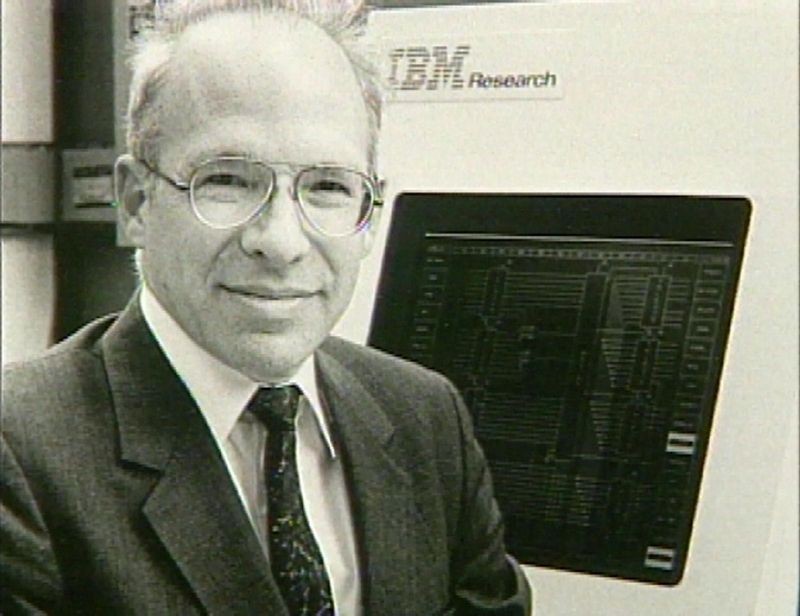
IBM Researcher and designer of the Hydrogen Bomb, Richard Garwin
Richard Garwin studied under legendary nuclear physicist Enrico Fermi, and his design was used for the hydrogen bomb. In 1952, he joined IBM’s Watson Laboratory, now known as Thomas J. Watson Research Center, and there did research that helped lay the foundation for technologies such as Magnetic Resonance Imaging (MRI), digital signal processing, laser printing, and touchscreens. Garwin was also a noted figure in nuclear non-proliferation, and served as a member of the President’s Science Advisory Committee under Kennedy, Johnson, and Nixon. He has been honored for his work in medicine, physics, and engineering, including being awarded the National Medal of Science in 2002.
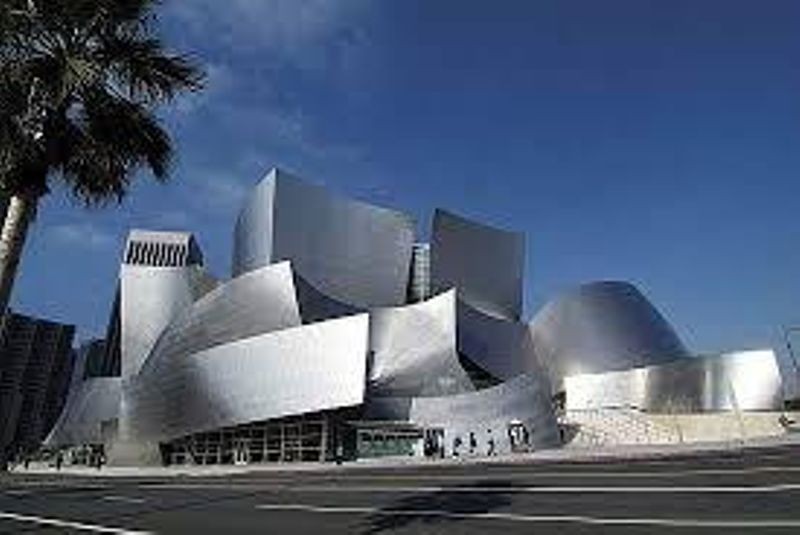
The Walt Disney Concert Hall in Los Angeles designed by Frank Gehry
Perhaps the most famous American architect since the death of Frank Lloyd Wright, Frank Gehry designed many of the most recognizable buildings of the last fifty years. His designs for projects like the Guggenheim Museum in Bilbao, Spain, and the Walt Disney Concert Hall in Los Angeles, were made possible by the use of Digital Project, a software package developed by Gehry Technologies. This software package not only allows for 3D modeling, but also for that information to be sent directly to manufacturers for production, simplifying the workflow of major building projects.
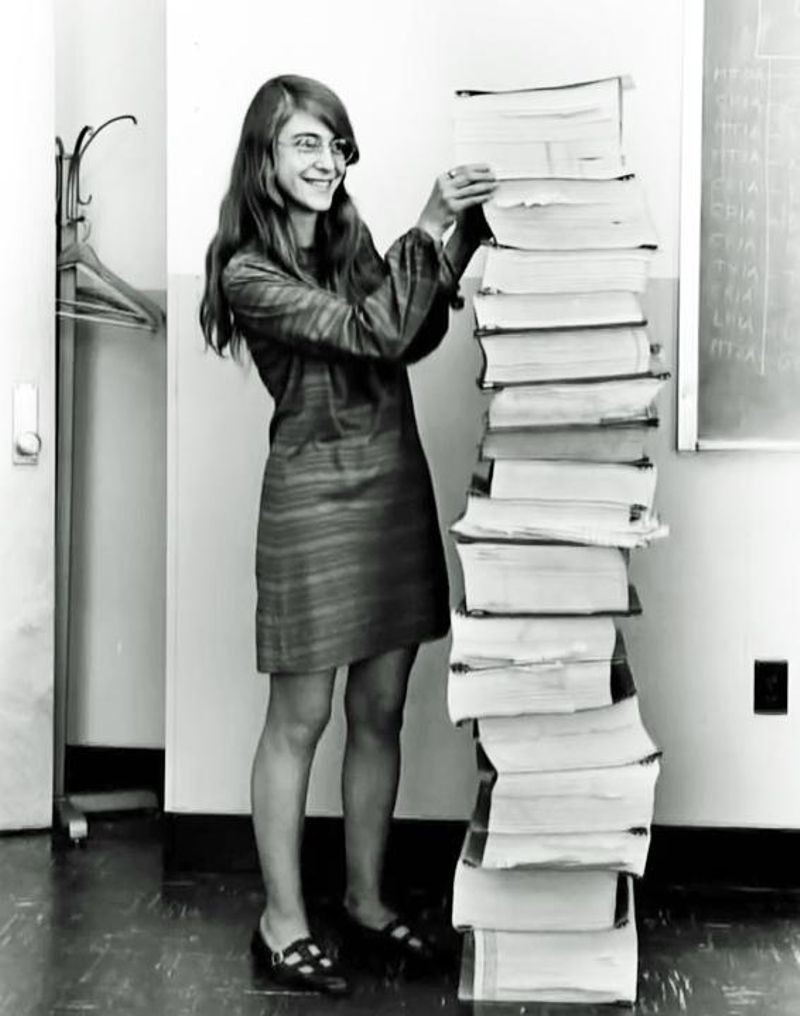
Margaret Hamilton standing with the source code for the Apollo Guidance Computer.
Margaret Hamilton first began working as a programmer on the USAF SAGE air defense project in the 1950s. Hamilton joined MIT’s Instrumentation Lab, later renamed the Charles Stark Draper Laboratory, in 1960. She led the team responsible for developing the in-flight software for the Apollo Guidance Computer intended to allow NASA to land an American on the Moon and return him safely to Earth. She called her work on the Apollo project ‘software engineering’, a term which she helped to popularize. Her work on the project in areas such as error detection and prevention led her to found Higher Order Software in 1976. She now runs Hamilton Technologies, Inc. in Cambridge, MA.
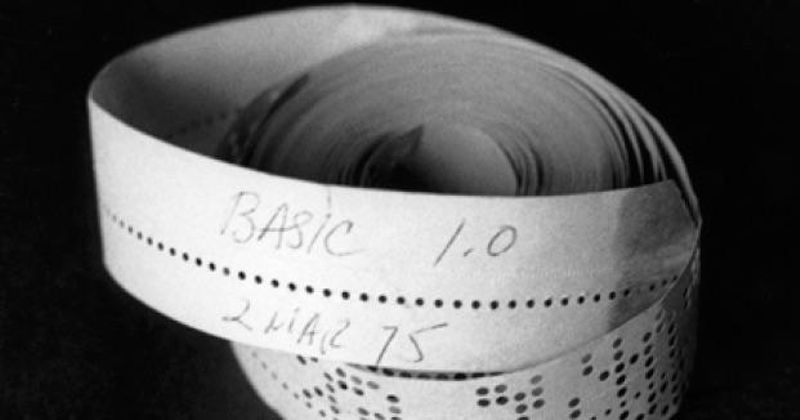
BASIC 1.0 paper tape for the Altair 8800 donated to the Computer History Museum by Bill Gates.
Bill & Melinda Gates are honored for their contributions through the Bill & Melinda Gates Foundation (BMGF). Founded as the William H. Gates Foundation in 1997, the group is one of the largest donors to programs around the world dealing with global health and welfare. Gates, co-founder of Microsoft with Paul Allen, has been a supporter of the Computer History Museum since our former incarnation in Boston. Gates has appeared at the Museum several times, including as a contestant in the Museum’s Computer Bowl. Gates donated an original copy of 8K BASIC for the Altair 8800 microcomputer to the Museum in 1984. Bill Gates was the lead donor for the construction of the museum’s Revolution: the First 2000 Years of Computing exhibit, opened in 2011.
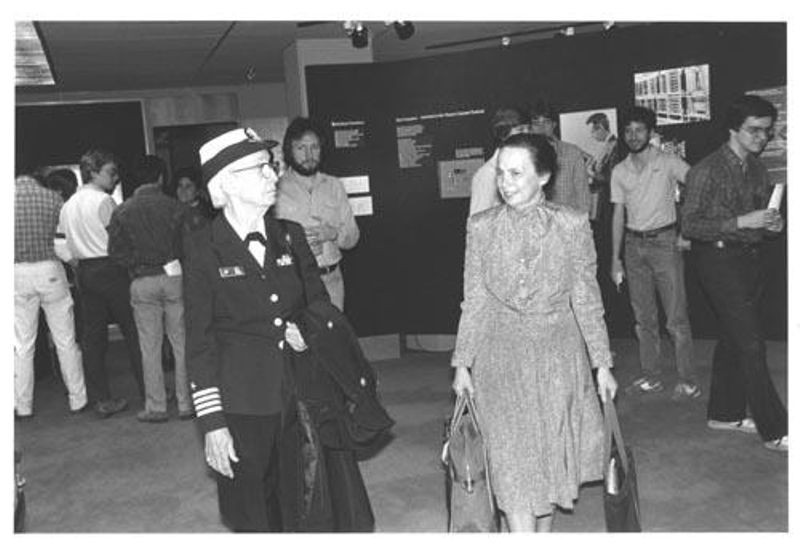
Adm. Grace Murray Hopper (left) and Computer Museum founder Gwen Bell (right) at the Museum in 1986.
Perhaps the honoree most closely related to the museum is the late Admiral Grace Murray Hopper. Her work with computers began with the Harvard Mark I in 1944, and continued for more than 40 years. She designed the first proto-compiler for the UNIVAC 1, A-0, in 1951, and led the teams creating the MATH-MATIC and FLOW-MATIC programming languages, both of which had a significant impact on the development of COBOL. Hopper served in the Navy until 1986, and was made an Admiral by President Reagan in 1983. On Hopper’s retirement from the Navy, Museum founder Gwen Bell named Hopper the first Computer Museum Fellow, awarding her a medal made from a silicon wafer at the ceremony. In the 30 years since, more than 70 pioneers in the field of computing have been named Fellows.
Perhaps this new attention to the field of computing pioneers stems from the realization of the depth of impact computers have on the lives of every American. If so, it would make sense that future honorees may be drawn from the well of computing’s many pioneers. This year’s honorees will be awarded their medals by President Obama in a ceremony at the White House on November 22nd.